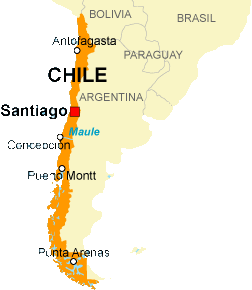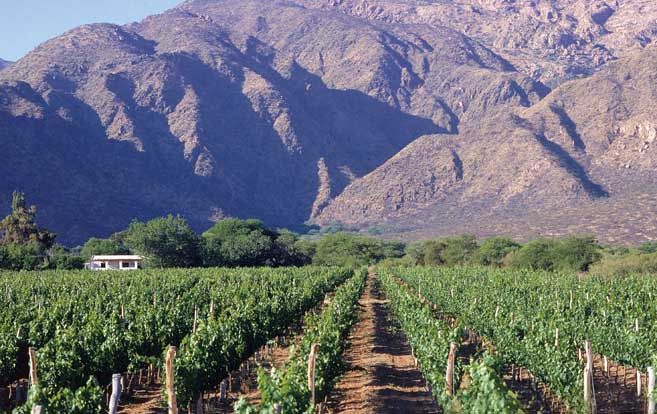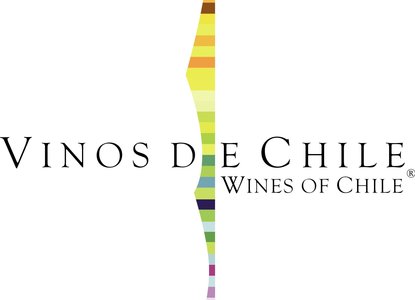Chile Wines

Even though wine production in Chile has been going on for centuries, it was not until the last decades of the 20th century that the local companies established permanent commercial bonds with oenologists and French and North american wineries. As a result of this, many Chilean wines have reached the top of the best wine lists. The most famous Chilean vineyards are in 5 areas in the middle of the country: Maipo, Maule, Curicó, Rapel, Colchagua and Casablanca, where the best white Chilean wines are produced. They grow mostly French varieties of grapes.
Chilean Wine History
The history of Chilean wine starts with the arrival of the Spanish settlers to the land we currently call Chile. The first wines were introduced in the General Captaincy of Chile of Chile between 1541 and 1554. The first plantation took place in La Serena before 1548.
The vines found their perfect habitat in the middle part of Chile, because its climate closely resembles the Mediterranean one, with rainy winters and really hot summers, and the production continued to grow until it reached such sheer size that Philip II had to ban any more plantations. This ban lasted until 1678. Another ban was placed during the 19th century, when Chilean wine started to compete with Spanish wine.

Half a century later, when Chile was an independent republic, they started to really consider wine like an important motor in the exportation sector. Claudio Gay, a French agricultural technician, was hired by the Chilean government to create the Quinta Normal de Agricultura which in 1850 already had planted around 40000 vines from Europe to be scientifically examined so they could determine which varieties would work better for Chilean wines. Claudio Gay probably had to learn Spanish in Chile to be able to talk to the wine makers.
The next logical step was the modernization of Chilean wine production. For this task, the expert was Silvestre Ochagavía, who is sometimes referred to as the father of modern Chilean wineries. Ochogavía traveled to Europe and hired French experts who in 1851started to replace the País grape (native to Chile) with Cabernet Sauvignon, Malbec, Merlot, Pinot, Riesling, Sauvignon Blanc and Sèmillon. The production of sparkling wine began in 1879 thanks to Alberto Valdivieso who imported Chardonnay and Pinot Noir vines from France, as well as the technical elements needed for it.
The phylloxera plague of the 19th century started in France in 1863 and began to extend around the world: in 1873 it reached California, in 1875 Australia, in 1880 South Africa... Strangely, Chile wasn't affected by this plague and would later contribute to the re growth of vineyards all over the world thanks to the grafting technique. Although this could have been a great time for Chilean wine, because their vines were healthy while the rest were not, they were too centered around the North american market and couldn't find a way to take advantage of the situation in Europe.

At the beginning of the 20th century, Chilean wine production descended due to an increase in the taxes applied to wine. The Prohibition in the US didn't help the situation, as it was the main market of Chilean wines. Between 1938 and 1974 there was a ban on the plantation of new vines and on the importation of new technologies for wine producing. When the rest of the wine making world was already using oak barrels to age their wine, in Chile they were using Rauli beech, a good wood but without the special qualities of oak.
The 80s saw the recovery of Chilean wine exportation, after international wine producers saw the quality and potential of Chilean wines and decided to invest in them. Spanish companies like Miguel Torres and Domecq opened branches in Chile at the same time that the technologies were being renewed and the laws regarding wine were changing. By the beginning of the 90s, Chile was already at the same level as some of the top wine producers in the world.
Like Spain and most wine making countries, Chile is divided into wine making regions. There are 5 main ones and 15 sub regions, each affected by the relief around them and the characteristic climate of each area. Do you want to keep reading about Chilean wine making regions?
Spanish Wine History
Spanish Wine Regions and DO
Spanish Wine Tours
Top Spanish designations of origin
Best Spanish Wines
Spanish Wine Production
Spanish Wine Types
Spanish Grapes
Spanish Sparkling Wine: Cava
Sherry Wine
Spanish Wine Cocktails
Spanish Wines in the World
Spanish Wine Prizes
Enotourism
Spanish spirits and liquors
Argentina Wines
Chilean Wines
Other sites